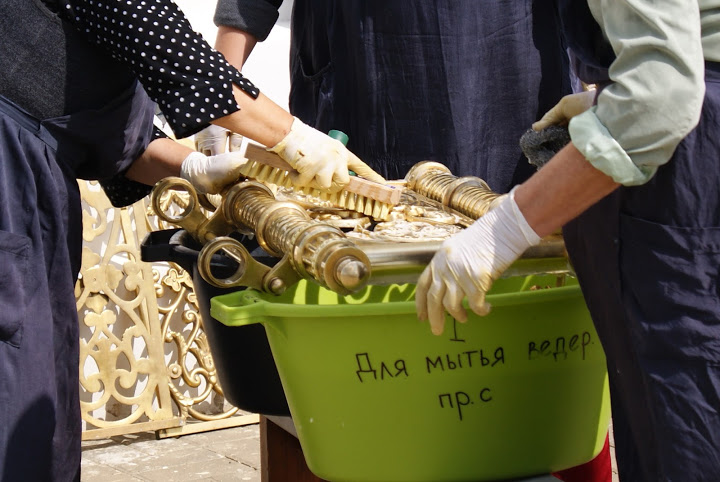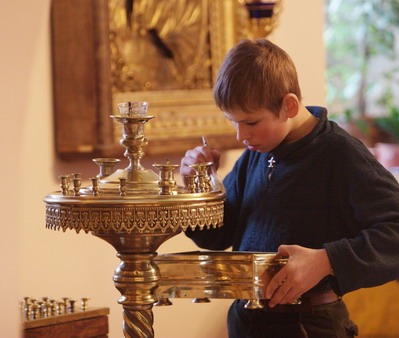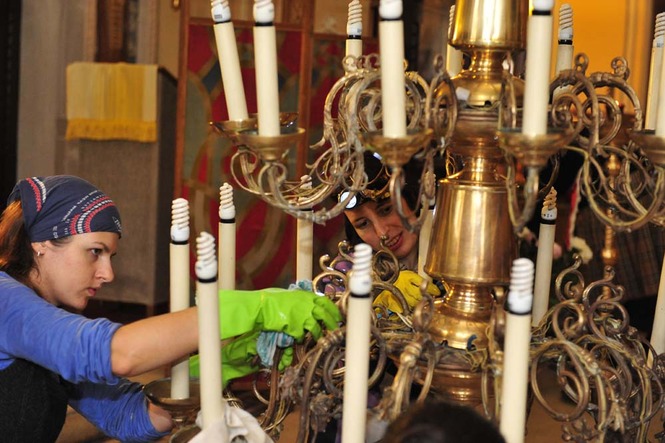
All material objects that are in the temple and used to perform any church services or sacraments belong to the Church's utensils. As a rule, these products are made of the most high-quality and valuable materials. To buy and keep objects of church utensils made of precious metals, not all Orthodox communities and parishes can afford. Therefore, most churches usually use gold-plated or silver-plated items, which in many ways are much more practical and cheaper.
However, these qualities also have the other side - these things are much faster darkening, blurring and losing their original appearance. Most often, this is the result of prolonged contact with an aggressive environment - incense burning incense, coking coal, wax. In order to preserve the objects of church utensils as long as possible, you must observe the necessary rules for the care of gilded and silvered items. Below we will consider the most effective of them. 
First of all, it is strictly forbidden to clean gilded products with various abrasive materials that can easily erase the thin layer of gilding applied to the product. It is recommended to simply soak the product in a soapy solution, then rinse with water and wipe dry. For cleaning old contaminated items of church utensils , abrasive and chemical agents are usually used.
Since the Soviet times in many churches for cleaning church candlesticks , ripid and other things - GOI paste was used. This tool was developed in the 30s of the 20th century in the USSR by specialists of the Optical Institute. In appearance - it's bars of green color of different consistency (this color is given by chromium oxide, which is the main part of it). Usually, for brush cleaning take paste No. 2 or No. 1, with the smallest abrasive content that gives a mirror shine. Nevertheless, it should be remembered that GOI paste is an abrasive agent and therefore use it very often - is not recommended.
Nowadays, there are a number of chemical products designed to clean gilded and silvered things. The most popular among them are products based on Asidol, which are sold under the same name and imported products, for example, household chemical goods brand Glutoclean.
 In general, we recommend such an order of cleaning the products of church utensils :
In general, we recommend such an order of cleaning the products of church utensils :
- 1. First of all, remove wax and dust from the surface of the product. Wax can be washed off by simply watering the object with boiling water. Do not forget that the metal is heated after this procedure, so be careful. In the most difficult cases, the wax is mixed with dust and it can be difficult to remove hot water, especially if it accumulated in the enamel painting of the product. Then you should use chemical means to remove the wax. At the end, wipe the product dry with a paper towel.
- 2. Check the object for rust or oxide films that could be hidden under the wax layer. Remove them with a special tool for rust removal. If the metal base is severely damaged, and the product itself is of great value, it is better to give it to a professional restorer.
- 3. If it is correct to remove dirt and soot from the object, then you can already bring it to shine. To obtain glossiness, use polishes for metals or simply rub the product with a paper towel.
It is important to remember the main rule - constant and attentive care, better than a rare cleaning with the use of abrasives and chemicals. Protect objects of church utensils - they will be able to perform their practical functions for a long time, and also serve as a symbol of that spiritual purity that must constantly be in our heart.




